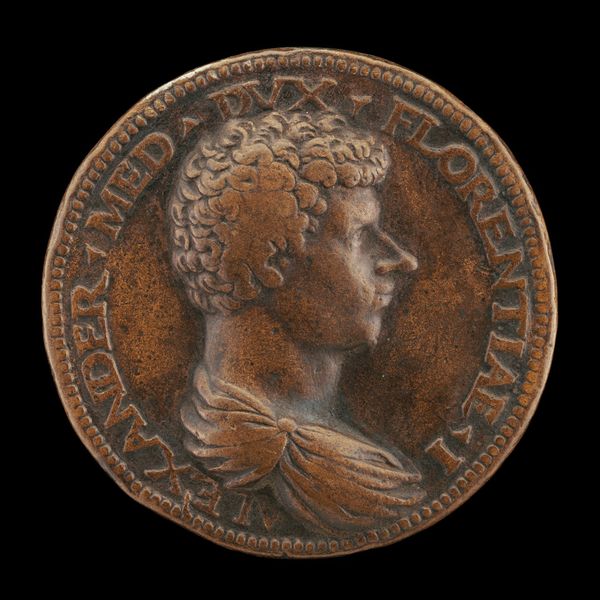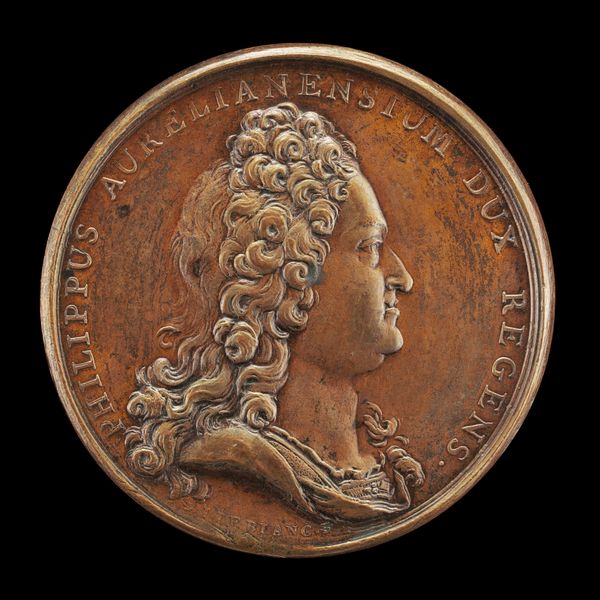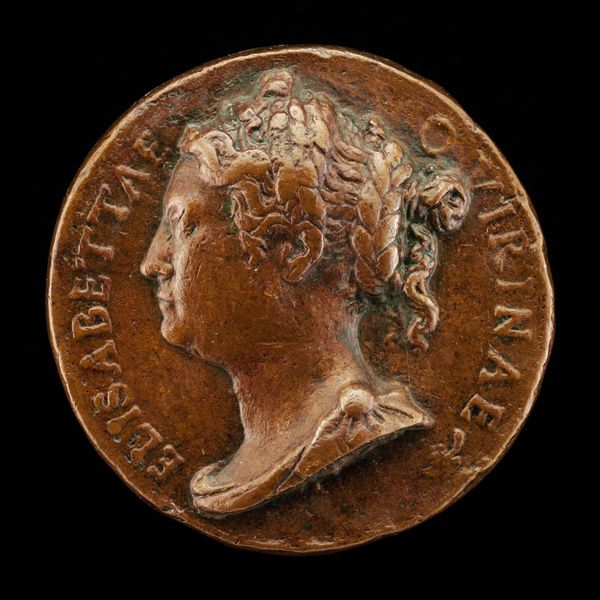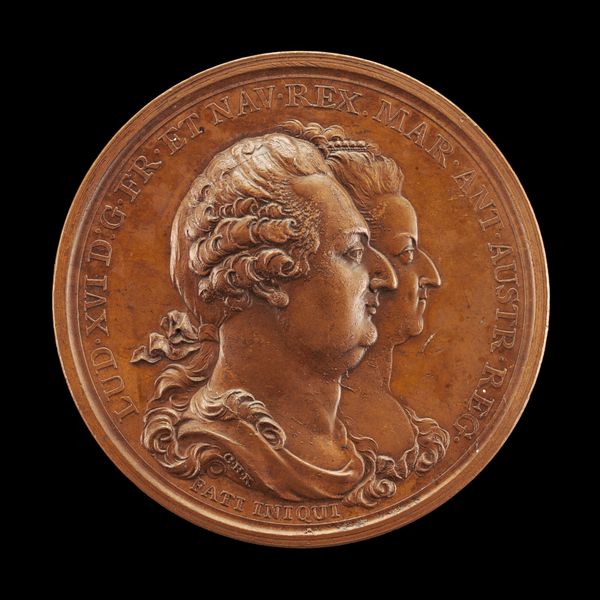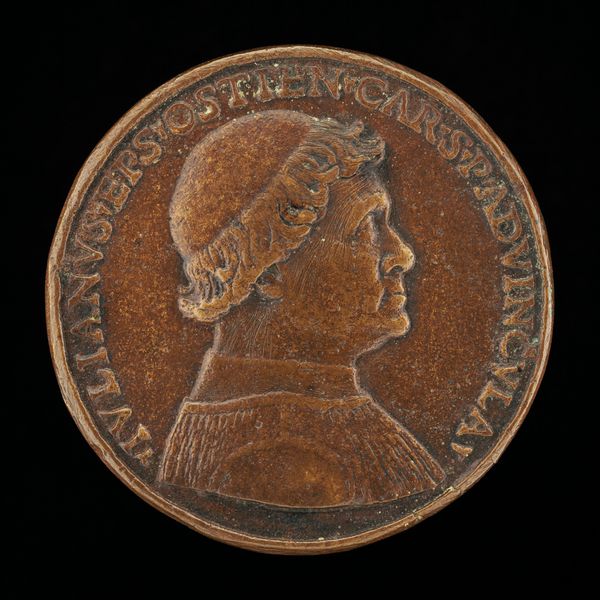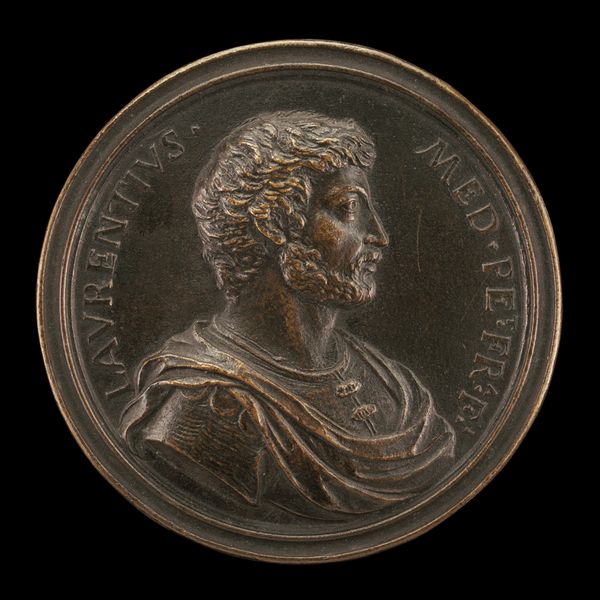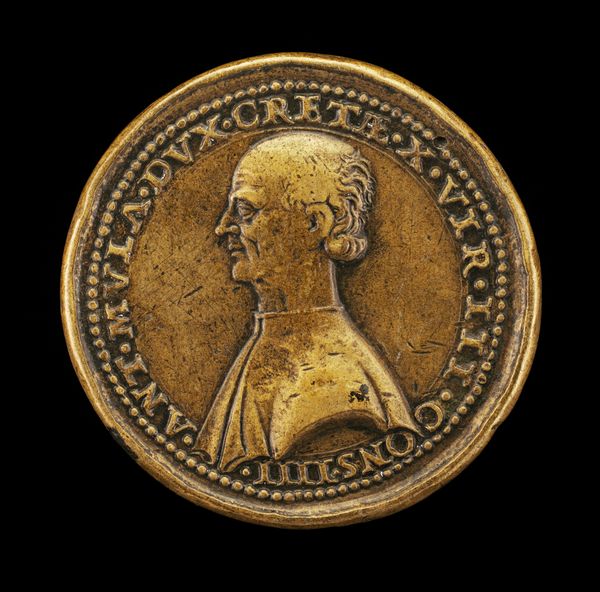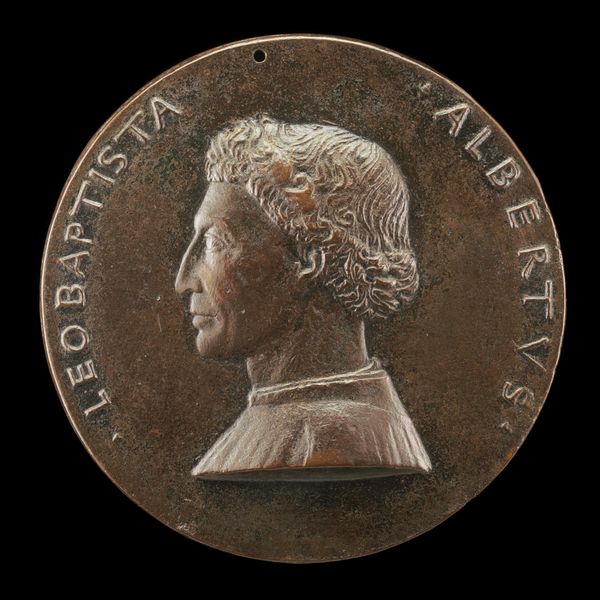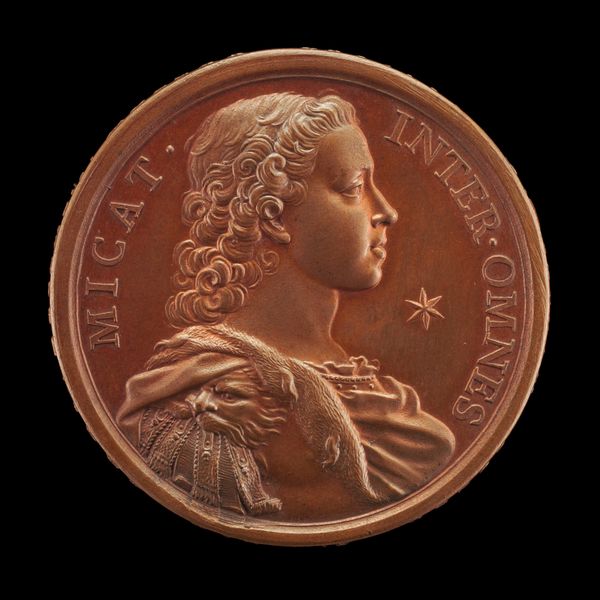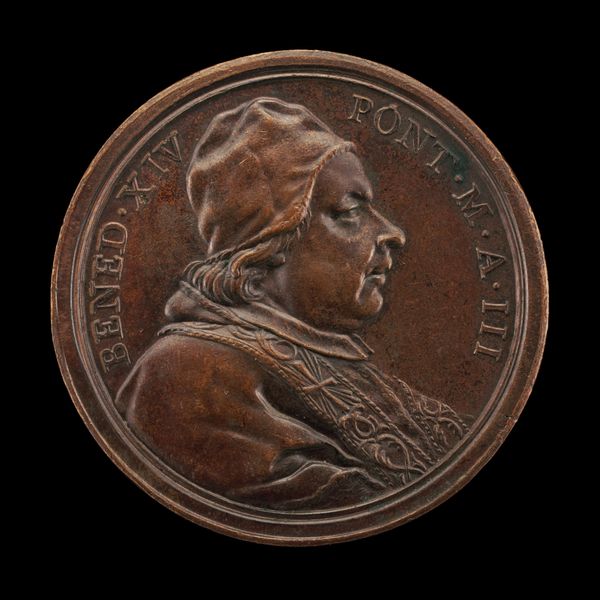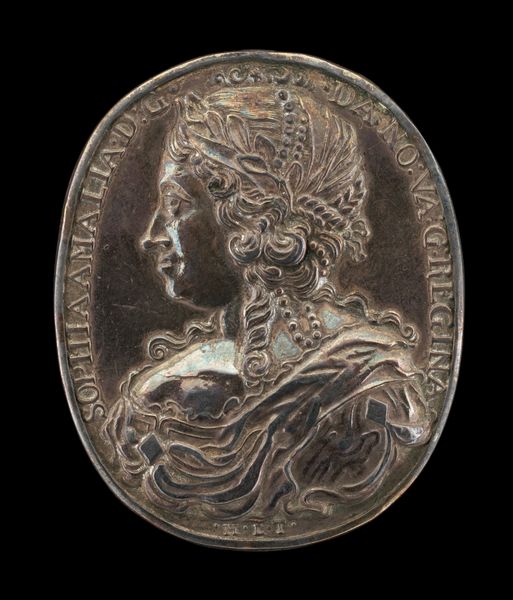![Christina of Sweden, 1626-1689, Queen 1632-1654 [obverse] by Giovanni Martino Hamerani](/_next/image?url=https%3A%2F%2Fd2w8kbdekdi1gv.cloudfront.net%2FeyJidWNrZXQiOiAiYXJ0ZXJhLWltYWdlcy1idWNrZXQiLCAia2V5IjogImFydHdvcmtzL2RmYmNkNTNmLTAwMWQtNDdjNi1hZWNmLTI1MmYzOTBkZDQ2My9kZmJjZDUzZi0wMDFkLTQ3YzYtYWVjZi0yNTJmMzkwZGQ0NjNfZnVsbC5qcGciLCAiZWRpdHMiOiB7InJlc2l6ZSI6IHsid2lkdGgiOiAxOTIwLCAiaGVpZ2h0IjogMTkyMCwgImZpdCI6ICJpbnNpZGUifX19&w=3840&q=75)
Christina of Sweden, 1626-1689, Queen 1632-1654 [obverse] 1680
0:00
0:00
bronze, sculpture
#
portrait
#
medal
#
baroque
#
sculpture
#
bronze
#
sculpture
Dimensions: overall (diameter): 3.63 cm (1 7/16 in.) gross weight: 21.45 gr (0.047 lb.) axis: 12:00
Copyright: National Gallery of Art: CC0 1.0
Curator: Here we have a bronze medal dating back to 1680, crafted by Giovanni Martino Hamerani. It's titled "Christina of Sweden, 1626-1689, Queen 1632-1654," and it depicts the Swedish monarch in profile. Editor: Immediately, the density of the bronze and the fine detail of her hair strike me. It seems heavy, permanent, but also remarkably delicate. Curator: The weight of the material underscores the weight of power, wouldn't you say? Christina was a controversial figure, a queen who abdicated her throne and converted to Catholicism. Editor: Absolutely. And the choice of bronze… a durable metal often used in commemorations of powerful figures, certainly communicates status. How was this crafted? The lost-wax process perhaps? Curator: Most likely. The level of detail in the hair, the inscription, suggests meticulous craftsmanship, perhaps multiple stages of molding and casting. Think of the artisans involved, their skills, their labor. Editor: Right, and the intended audience too. Who was this object for? It's not large, it’s intimate almost. What message was it supposed to convey? And whose story is prioritised when it comes to telling this? Curator: As a ruler who defied convention, Christina challenged the gender norms of her time. We should look at the representation of her power and intelligence at a time when powerful women were viewed with suspicion and analyze this narrative accordingly. Editor: And while the artistic quality is notable, understanding its purpose gives us greater insight into not only Christina herself, but the socioeconomic and cultural forces she defied and in some respects perpetuated. Curator: Indeed, by connecting the object's production to the politics surrounding Christina, we're afforded new paths into better interpreting the medal’s layered complexity. Editor: I agree. A fascinating intersection of materials, history, and gender. It underscores how seemingly simple objects can be repositories of immense social and political information.
Comments
No comments
Be the first to comment and join the conversation on the ultimate creative platform.
